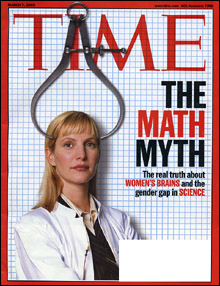The magazine racks are filled with dying publications — but why is the glossy’s forecast not nearly as gloomy as newsprint’s?
|

Dead: Radar, Cargo
|
One sign of how the magazine business is doing these days is a three-month-old Web log called “Magazine Death Pool.” Adorned with the ominous image of the grim reaper, the “pool” is littered with the carcasses of deceased publications (Radar), titles deemed in critical condition (Hollywood Life), and mags seen as somehow doomed even before launch (an unnamed Condé Nast business title slated for 2007).
As ominous as that might seem for the magazine industry, it’s not that simple.
While declining circulation and revenues as well as the lure of information on demand have left the newspaper business reeling, the picture is considerably more complicated for a magazine industry accustomed to serious churn. There were more than 250 publication launches announced in 2005, according to the Magazine Publishers of America (MPA). There sure weren’t 250 new daily papers rolling off the presses.
Susceptible to some of the ills affecting newspapers and relatively immune to others, the magazine environment is tough, but not completely inhospitable. There’s bad news at Time, but good news for the Nation. It’s death to Cargo, but life at Men’s Vogue. Lad-mag king Felix Dennis may be looking to peddle Maxim and Stuff, but here in Boston, a team is set for a September launch of 02138, ambitiously advertised as “a Vanity Fair for Harvard.”
In fact, if you ask three experts, you get three different takes on the health of magazine publishing. (We know how the Reaper feels.)
“Consumer magazines are being hit on all sides,” says Thomas Kemp, managing director at the Veronis Suhler Stevenson media investment firm. “A strong flight of advertising to online” poses one problem, he says, while “newsstand sell-through has been challenging at best, if not declining.” He adds: “It’s a very challenging time for the magazine industry.”
Samir Husni, chair of the University of Mississippi journalism department and someone who closely tracks the magazine industry, says, “When you hear all the bad news ... it’s a market adjustment. Almost every 10 years we go through the same thing.”
And Nina Link, the bullish president of the MPA, simply calls the current environment “a time of tremendous transformation.”
Winners and losers
Despite capturing a prestigious National Magazine Award in General Excellence this month, Time magazine is not having a happy time of it — nor are newsweeklies in general.
Time Inc., the parent company of Time magazine, has issued about 450 pink slips since December. And the perennially troubled US News & World Report also endured painful cuts. In 2005, ad pages and ad revenues were down significantly at Time (minus 12 percent and minus eight percent, respectively) and at Newsweek (minus 11 percent and minus six percent), compared with 2004, according to the Publishers Information Bureau (PIB).
Then there’s the thorny issue of the editorial mission for “news” magazines in an era of instant news. The “State of the News Media 2006” report by the Project for Excellence in Journalism (in the interest of disclosure, I will be joining the PEJ in July) found that “the slow drift toward lighter fare at Time and Newsweek showed no signs of abating.” A more scathing analysis in the New York Observer concluded that “if the newsweeklies seem musty and pointless, it’s because they’ve retreated from their jobs.”
“I think that certainly the newsweeklies, the business magazines, the technology magazines are looking at the kind of reinvention that every category that lives beyond 10 years has to do,” says the MPA’s Link.
Conversely, despite some concern about over-saturation and the quick shuttering of American Media’s Celebrity Living, magazines about the rich, famous, and frivolous — that often means Jessica, Jennifer, and Brangelina — remain a hot commodity. A report on WWD.com projected that People, Us Weekly, Star, In Touch, and Life & Style will combine to sell almost a half million more copies per week in the first quarter of 2006 than they did in the same period last year.
|

Floundering: Time
|
Among those publications that Husni selected as the industry’s 30 “most notable” 2005 launches are the star-studded OK!, Niche Media’s Capitol File (the Washington sister of the glitzy Boston Common, which debuted last September), and something called Hollywood Dog. (We’re not sure what to make of that one.)
Even the more highbrow 02138, the Boston-based magazine bankrolled by Atlantic Monthly owner David Bradley, seems hooked on the power of celebrity and success. Targeting a high-end demographic — also the strategy of Boston Common — 02138 will lead its first issue with a list of the 100 most influential Harvard alum.
“We certainly know that celebrity is a very big category,” says Link. “Part of it may be escapism at a time when life is challenging and hard and difficult.” These “caption-oriented magazines” are tailored for readers suffering “from attention-deficit syndrome across the board,” adds Husni.